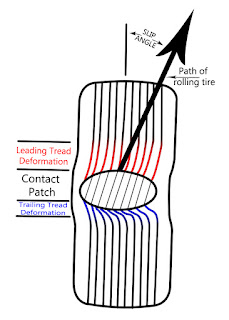Common exhaust system myths
What does exhaust system do?
First let's check out components of the exhaust system: (main components on a NA 4-stroke engine)
First let's check out components of the exhaust system: (main components on a NA 4-stroke engine)
- Header (exhaust manifold): helps manipulate and guide exhaust through the manifold and comes to the pipe at a uniform preset velocity
- Catalytic converter: triggers chemical reaction to save the environment
- Resonator: creates waves to compromise certain freq band of the noise
- Muffler: literally muffles the car
- O2 sensor: monitors the air-fuel ratio, works along with ECU (plugged into the cat)
- Tailpipe (with tip): carries out the exhaust at the very last step
Maybe it's crystal clear now what the exhaust system does, have you ever asked yourself the following questions:
1. What's the temperature around the exhaust? (or the exhaust gas?)
2. What is backpressure?
3. Are bigger exhaust pipes (larger in diameter) better?
4. What if I run the vehicle without the exhaust? (or open header?)
Below is a concise list of answers for the above.
1. The exhaust system carries away more than half of the rejected heat in the system. In the internal combustion engine there are only around 25%~30% of heat is transformed into kinetic energy, i.e., propelling the crankshaft, while the rest of the heat is not used efficiently. This is a sign of the efficiency and is normal in all vehicles. And you may not realize that the exhaust carries out 3/4 of all the rejected heat from the system. 3/4 * 1/4 is around 55%.
2. Backpressure is actually the 'pressure' needed to get the exhaust gas from the exhaust manifold to the atmosphere. After the compression the internal of the engine is of high pressure and once the exhaust valve opens the exhaust comes out fast. However, it doesn't directly go to the outside air. It needs to pass along different restricted parts of the exhaust system, like the cat and the muffler. Backpressure is what we refer to the pressure 'pushing' these wasted gas along with heat out. That is to say, when we cut the muffler, cut the resonator, cut the cat or even the header, we are reducing backpressure. There is also another term, scavenging which could be confusing to most of us. Scavenging is the phenomena or the fact that when there is a constant flow through a pipe, what's behind the pipe feels like being sucked out. Think of the NASCAR race. Why cars are running so close? And why do people say driving behind another closely could save you fuel? The answer is SCAVENGING. That's why. In fact scavenging is not the same thing as backpressure. Backpressure is bad thing, causing the whole system to waste energy. But scavenging is a good thing. When we are driving on the road, it helps us get rid of the exhaust from the manifold.
3. There is some optimal exhaust pipe size for a certain car with its current setup. Normally factory specs is the ideal one for its use (street or track whatever). But.. why? Well, outbackjoe has a very good explanation on this:
We don't want it to be too big
"Flow velocity is important in exhaust pipe design. Exhaust gases are emitted in pulses. One pulse every exhaust stroke. Small pipes yield a high flow velocity. High flow velocity increases inertia of the flowing gas and smooths out the stop / start nature of gas pushed out by the engine. As the gas continues to flow between exhaust strokes, it creates a low pressure at the exhaust manifold which helps to suck out exhaust gases on the next exhaust stroke. This reduces the energy required to clear the cylinder of exhaust and re-accelerate the gas residing in the exhaust pipe already, thus reducing the energy wasted pushing out exhaust and improving the efficiency of the engine. Further, smaller exhaust pipes means the mass of gas held within is less. This translates to less energy required accelerating the mass of gas in the exhaust pipe with each exhaust stroke. Again engine efficiency is improved."
And also we don't want too small a pipe
Smaller exhaust pipes present a greater resistance to steady state flow. So smaller isn’t necessarily better either. It’s a compromise between resistance to flow, flow velocity and mass of gas residing in the pipe. There is a sweet spot.
But in short there is some common sense for picking the right size. It depends on your car's horsepower, it's composition, and your intention.
Note that, larger pipe could help increase peak power (higher power band) but result in lack of torque or power in the lower to mid RPM range, because of the velocity or the scavenging effect! And the smaller pipe helps for lower RPM runs.
4. Please don't run the engine without header (open header could be risky too). Here is the reason: the biggest issue there is overheating for the combustion chamber. When you don't have the header, the engine's gonna be running lean, with very low amount of fuel in the system. The engine keeps sucking in more air for the ignition stage, causing overheating. Common consequences are blown, bent exhaust valves, and other blown peripheral parts. In addition, there is turbulence when the exhaust gas escapes. There also exists chances for cold air to sneak into the chamber, resulting in a mess in the engine strokes. So don't do that. Even running open header could be risky, not to mention air pollution plus the noise...
3/12/17


Comments
Post a Comment